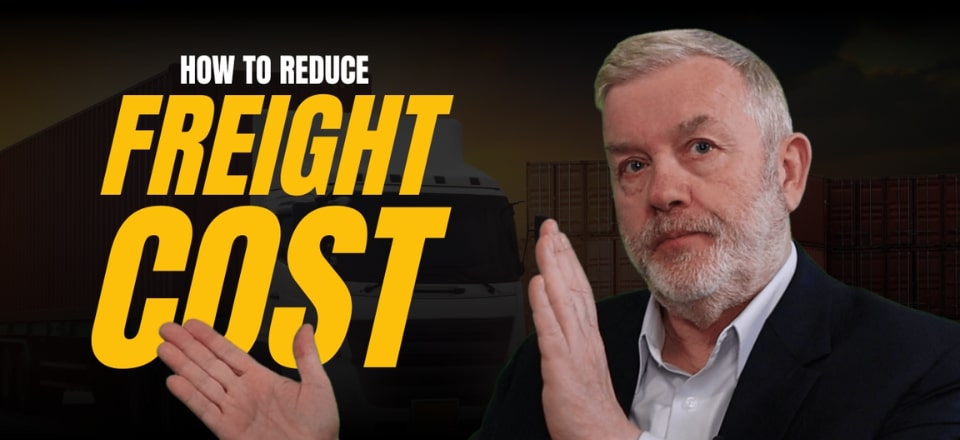Looking to reduce your freight costs but not sure where to start?
Freight expenses can quickly add up, and knowing the best strategies can be a game-changer.
What challenges are you facing in managing these costs?
Don’t miss out on the insights in the video below!
This week, we’re discussing ways to reduce freight costs—a frequent concern in logistics. Recently, I hosted a webinar on saving logistics costs, and freight costs were a hot topic. Despite covering this before, it’s crucial to revisit seven key strategies that can help reduce your freight expenses.
Avoiding Common Misconceptions
Many believe the best way to lower costs is to pressure your freight company for a rate cut. However, transport operations run on thin margins, especially in the competitive commodity freight sector. Simply demanding lower rates might result in short-term savings, but it’s not sustainable. If the rate is too low, the carrier might go out of business, as seen with a major freight company in Australia recently. The smarter approach is to change the task—how you present your freight to the carrier and what you ask them to do.
Volume Leveraging
Leveraging volume is an effective strategy. Often, different parts of a company use different carriers, leading to varying rates. By consolidating your freight needs and working with fewer carriers, you can secure better rates due to increased volume. For example, if multiple branches of a company use the same carrier but at different rates, pooling their volume can result in significant discounts.
Match Transport Resources to the Task
It’s important to ensure that the transport resources match the task at hand. This includes using appropriately sized vehicles and considering any necessary attachments like cranes or tail lifts. When renewing contracts, assess whether the resources provided by the carrier are suitable for your needs, as this will impact the rates you receive.
Choose the Right Rate Structure
Understanding the rate structure is crucial. Different rate types—per ton, per pallet, full truckload (FTL), or less than truckload (LTL)—can affect your costs. It’s essential to choose a rate structure that aligns with your shipping patterns. For example, if most of your shipments are single pallets, focus on securing a competitive single pallet rate rather than a full truckload rate.
Related articles on this topic have appeared throughout our website, check them out:
- 10 Freight Management Mistakes and How to Avoid Them
- Freight Benchmarking: What Is It? Why Do It?
- Why Containerised Freight Shipping is Daunting for SMEs
- 12 Smart Ways to Reduce Your Freight Costs
- There’s a Less Frustrating Way to Negotiate Freight Contracts
Editor’s Note: The content of this post was originally published on Logistics Bureau’s website dated August 21, 2024, under the title “How to Reduce Freight Costs – Key Tips Many People Miss“.



